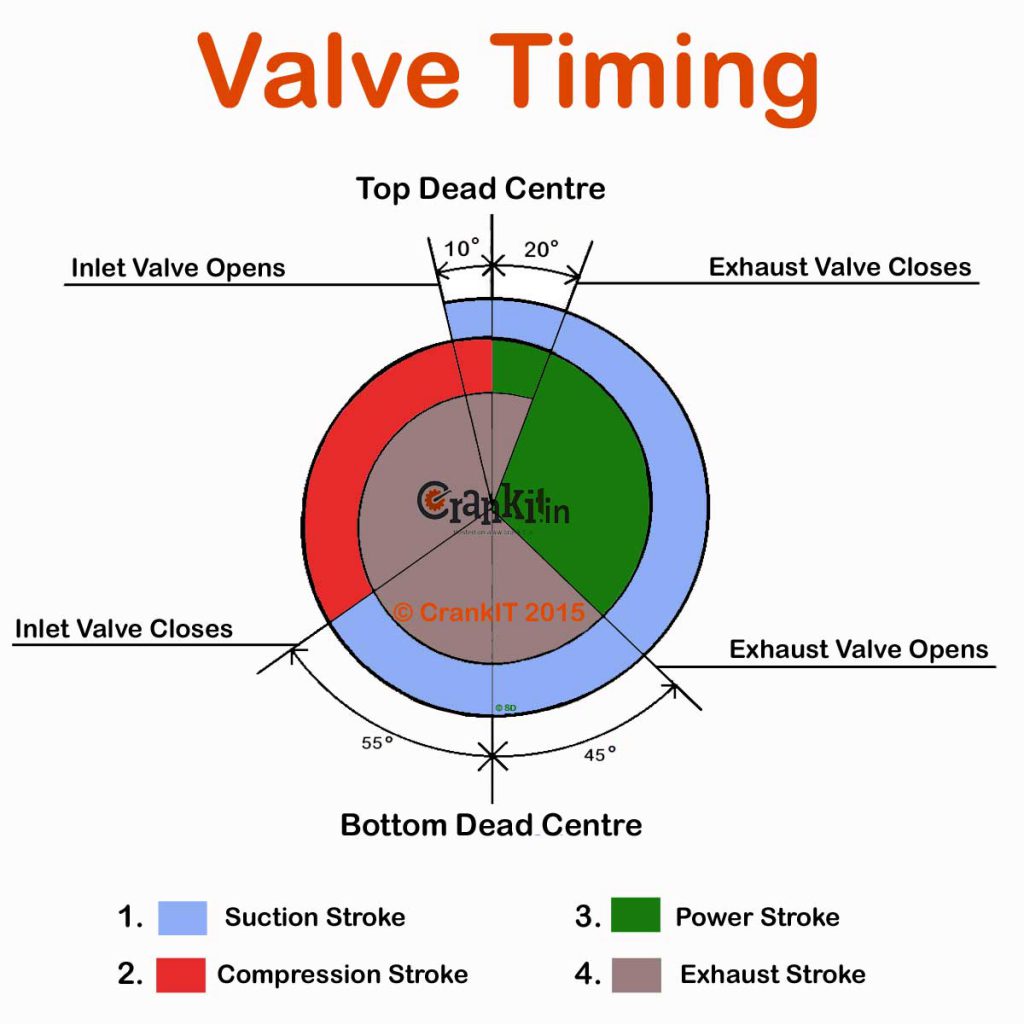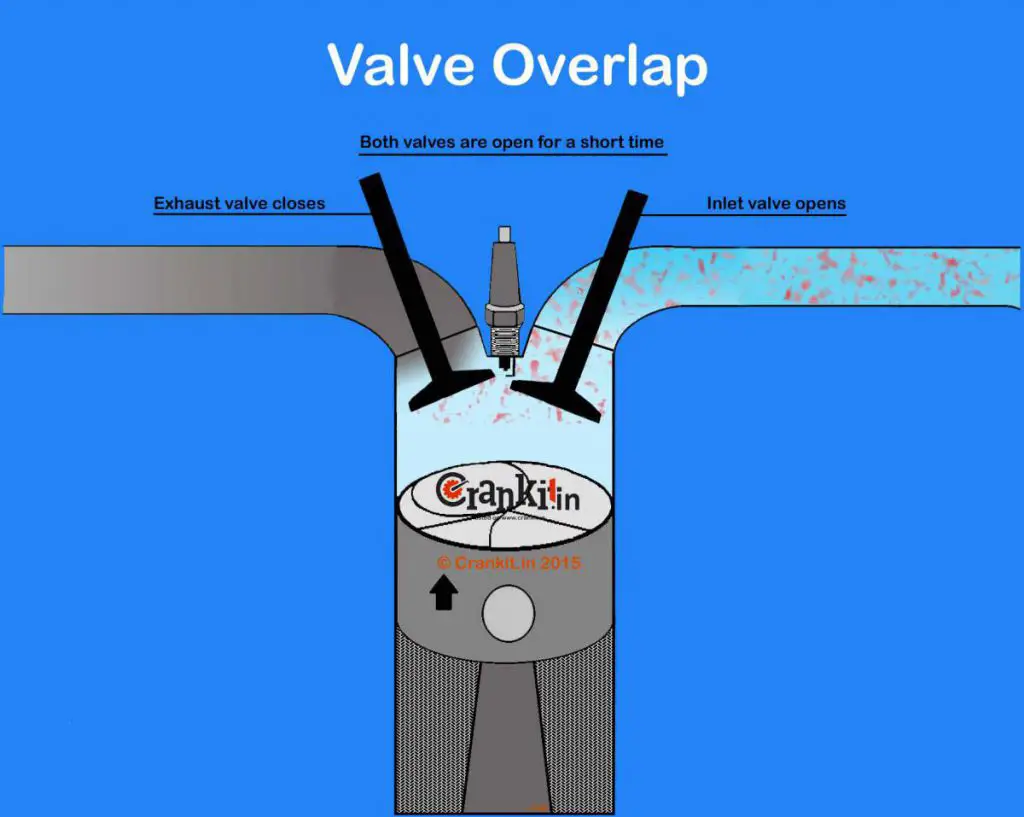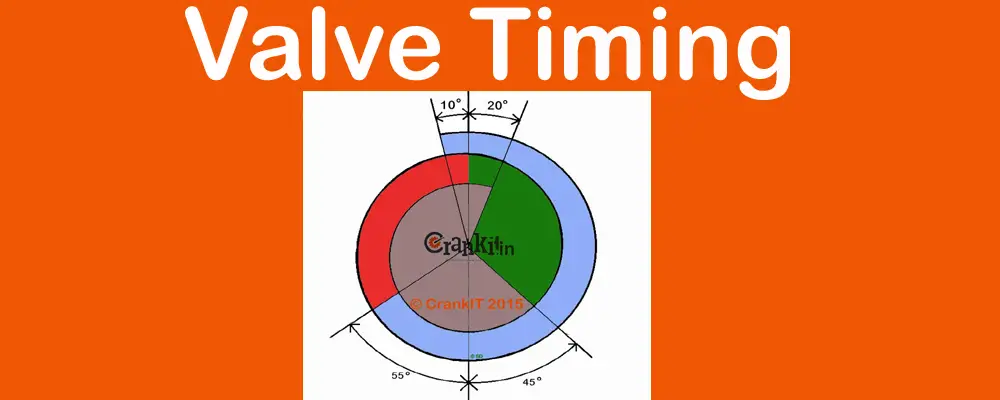Engine Valve Timing Explained
Firstly, read here about how the engine valves open & close. The engine valves are just like the human nose. An automotive engine uses valves for it’s ‘breathing’ (inhale/exhale) process. The engine’s camshaft opens and closes the valves at a specific interval. The timing of the opening & closing of valves is specified in degrees corresponding to the position of engine’s pistons. Engine valve timing is the most critical process of IC engines.

The inlet valve usually opens few degrees before the piston reaches TDC in its exhaust stroke. It closes after quite a few degrees of piston reaching the BDC, i.e. when the piston starts to move up the cylinder in the compression stroke. In suction stroke, the air-fuel mixture or charge gets sucked into the cylinder very rapidly. This is because the downward movement of the piston creates the vacuum (or negative pressure) in the cylinder and the air-fuel mixture gets filled in the empty space.
How does Engine Valve Timing help?
This air-fuel mixture (also known as charge) has both mass and motion. The entire charge cannot enter the cylinder even when the piston reaches the end of its downward stroke because the opening of the inlet valve is small. Therefore, the pressure in the combustion chamber remains below the atmospheric pressure, while the charge is still moving in the direction of the motion of the piston with high velocity.
If the inlet valve closes at this point, the cylinder will receive less charge than its requirement. Hence, the inlet valve is kept open until the piston enters its next upward stroke i.e the compression stroke. At this point, the pressure in the cylinder becomes almost equal to the atmospheric pressure. The engineers precisely calibrate the actual closing point of the inlet valve in such a way that it coincides with the point where the motion of the incoming charge starts to reverse.
The valve overlap:
In the exhaust stroke, the piston again moves upwards; pushing the exhaust gas out through the open exhaust valve. The exhaust valve opens before the piston reaches BDC in its power stroke. As the exhaust valve opens just before BDC, it causes some of the pressurized exhaust gases to escape even before the piston starts it’s upwards stroke.

It releases the excess pressure and helps to reduce pumping losses for the piston when it moves up. The exhaust valve closes after a few degrees of piston reaching the TDC, i.e. when the piston starts to move down the cylinder in the suction stroke. At this point, both the inlet & exhaust valves remain open for a very short period of time; causing an ‘overlap’. This ‘overlap’ helps in better ‘scavenging’ or expelling the remaining exhaust gases from the engine cylinder.
What is Variable Valve Timing (VVT)?>> Continue Reading Here
